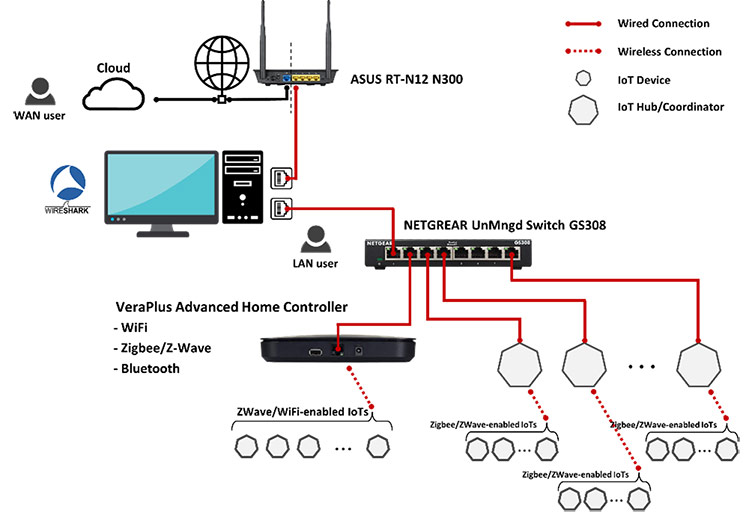This project aims to generate a state-of-the-art dataset for profiling, behavioural analysis, and vulnerability testing of different IoT devices with different protocols such as IEEE 802.11, Zigbee-based and Z-Wave protocols.
The following illustrates the main objectives of the CIC-IoT dataset project:
Current experiments and data collection experiments include:
Power experiments: around forty devices configured and powered on individually and the network traffic captured in isolation.
Idle-time data: a batch file that contains a script is configured to collect each device’s network traffic using dumpcap, with each instance being filtered by their respective MAC addresses. The Idle-time data is captured for 8 hours starting in the late evening and continued till early in the morning.
Interaction experiments: captures the network activity and transmitted packets for each functionality on IoT devices.
Daily experiments: captures whole network communication of IoT devices throughout the day. This includes passively generated network activity from the devices of lab users as well as data generated when the users actively interact with the devices.
Scenario-based experiments: captures simulated network activity of smart home based on five different types of scenario experiments using a microcosm of devices. Additionally, this process provides data on how devices may interact with each other as activities occur simultaneously.
As shown in this figure, the network configuration for this project consists of almost 40 IoT devices.

As depicted in the architecture diagram, a 64-bit Windows machine with two Network Interface Cards (NIC) has been configured. One NIC is connected to the network gateway, and the other is connected to an unmanaged network switch and a Windows Intern Sharing service has been executed on it. IoT devices that require an Ethernet connection are connected to this switch.
These devices are usually communication centers for other devices, examples being the Philips Hue and Eufy HomeBase. Finally, a smart automation hub, Vera Plus is also connected to the unmanaged switch, which creates our wireless IoT environment to serve IoT devices compatible with Wi-Fi, ZigBee, Z-Wave, and Bluetooth.